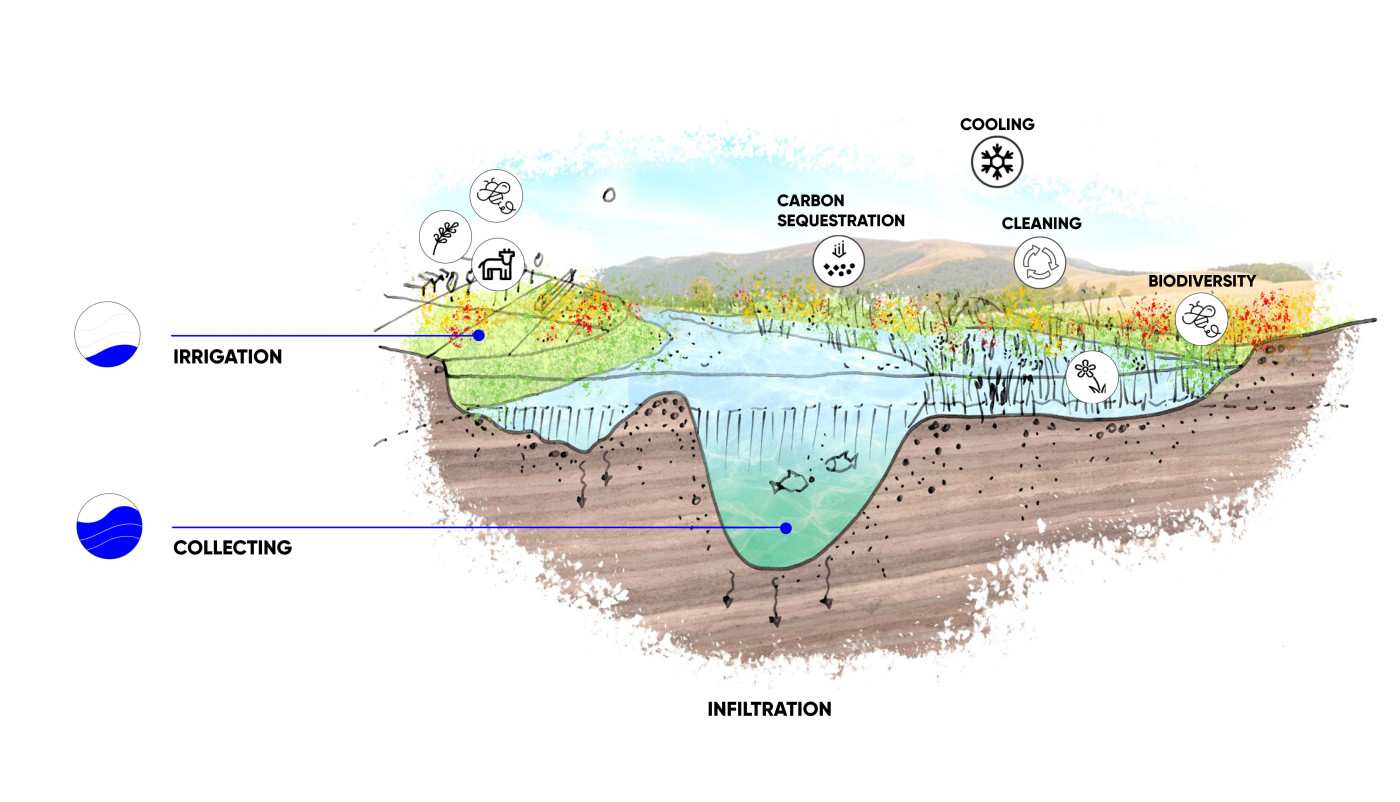KOTSIUBA landscape architect Mariia Andriienko took part in the Panorama Ukraine. Working on Water workshop in Rotterdam, exploring how rainwater strategies can support southern Ukraine’s recovery after the destruction of the Kakhovka Hydropower Plant.
The November workshop brought together young architects from Ukraine, Chile, Venezuela, India, Argentina, Germany, the Netherlands, and beyond. Mariia was invited as one of the team leaders, focusing on innovative approaches to rainwater management.
The event was organized by UNUN, a Ukrainian–Dutch initiative that supports architects from Ukraine. Water was the central theme: while Ukraine faces the aftermath of the Kakhovka dam collapse — one of the most severe recent environmental catastrophes in Europe — the Netherlands, a country built on constant water management and resilience, provided invaluable expertise and perspective.
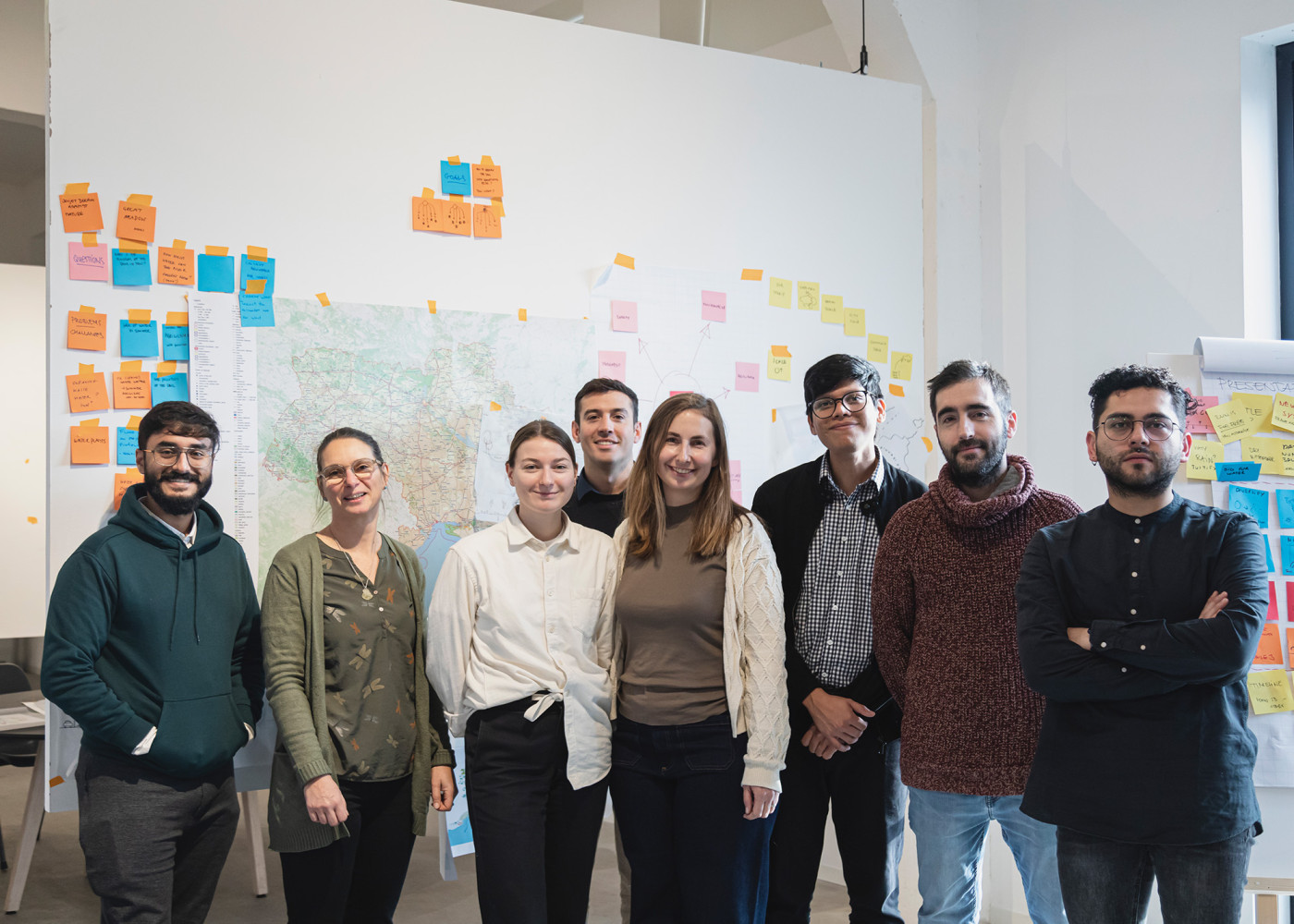
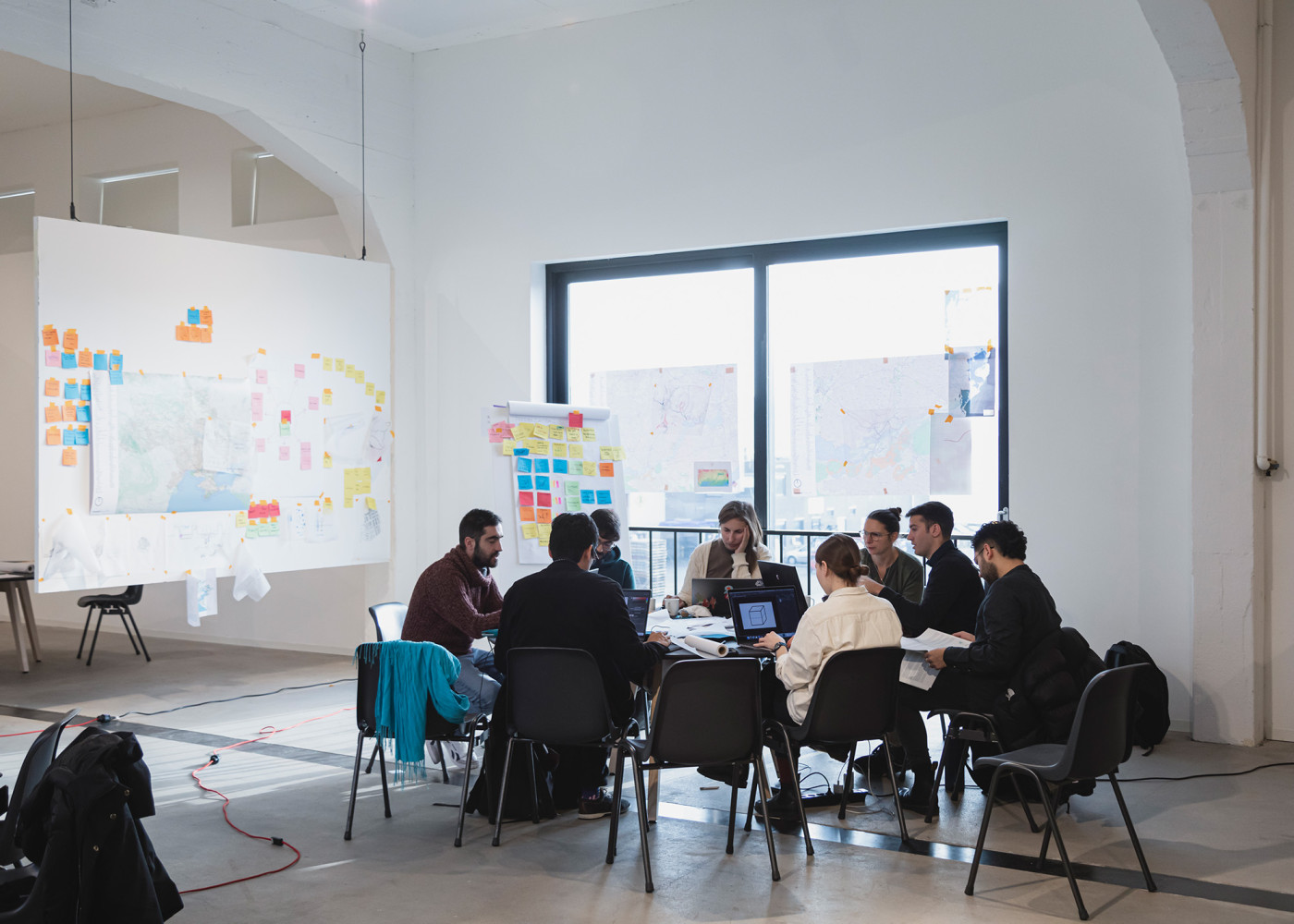
Mariia collaborated with colleagues from Felix Landscape Architects together with Débora Lambert and Eduardo Marín Salinas. The studio brings extensive expertise in water management — from projects that redirect river courses to the integration of water strategies in every public space they design.
The week-long workshop combined lectures in the mornings with project work in the afternoons. Highlights included a presentation on dam removal programs in the United States — efforts aimed at restoring rivers to their natural courses — as well as a lecture by the Vice-Rector of Kherson University, who provided context on the region surrounding the Kakhovka Hydropower Plant and the consequences of its destruction.
The Kakhovka dam had supplied water for households and agriculture, generated electricity, and served as a bridge between the river’s two banks. The workshop’s task was to develop visionary strategies that could help Ukraine mitigate the impacts of the catastrophe and be applied across different cities.
Mariia’s team focused on rainwater as a resource:
“We worked from the assumption that the dam might not be restored, so we thought about what could already be implemented now,” she explained.
Relying on a single water source — in this case, the reservoir — is a risk. Instead, risks must be distributed by tapping into alternative resources. Rainwater is one of them. The team developed a project that integrates rainwater management at the scale of neighborhoods, cities, and the wider region.
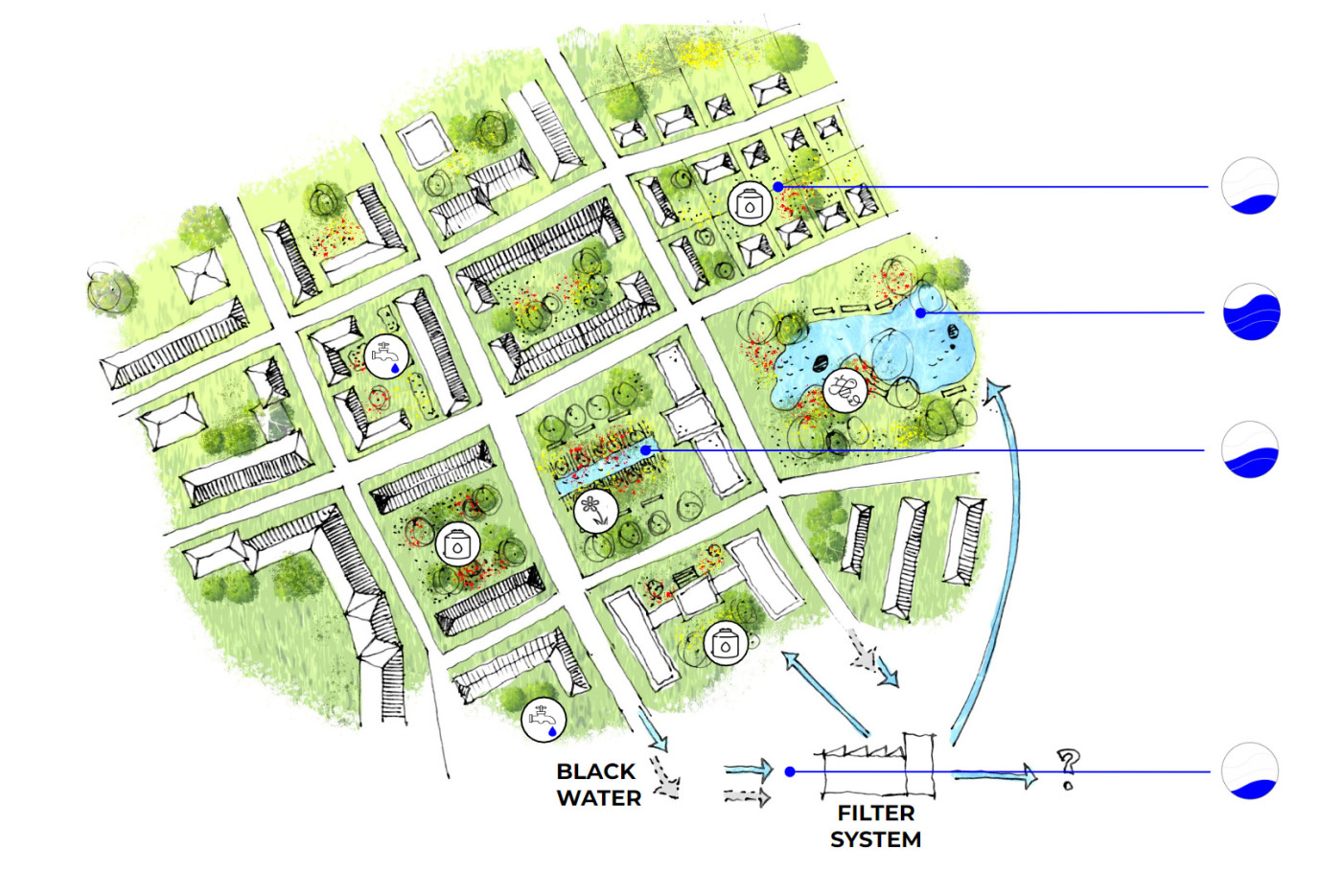
At the neighborhood scale, rainwater can be collected from rooftops, stored in courtyard reservoirs, and distributed through communal taps or local pipelines. These reservoirs can serve more than a technical function — they can become landmarks, art objects, or even elements of play. Another tool is rain gardens designed as children’s playgrounds: in dry weather they function as sunken play areas, while during rainfall they transform into temporary water basins. Even if the water is not reused, such systems significantly reduce the load on the city’s stormwater infrastructure.
At the city scale, multiple strategies for capturing rainwater can be applied. Beyond rain gardens in parks or near housing, and rooftop collection systems, water can also be harvested from sidewalks and even from roads. In the Netherlands, for example, systems separate out the first flush of stormwater — carrying pollutants — into the sewer, while subsequent, cleaner rainwater is stored. Dutch practice also includes experimental “sponge parks,” which test soils and plantings for their capacity to absorb and retain water.
At the regional scale, rivers become key actors. Before the reservoir was built, rivers feeding into it carried higher volumes of water; today, with faster flow, they hold much less. To retain and utilize water, the team proposed creating small artificial ponds, or “pockets,” adjacent to rivers. These would capture runoff, hold it temporarily, and later make it available for agriculture and domestic needs.
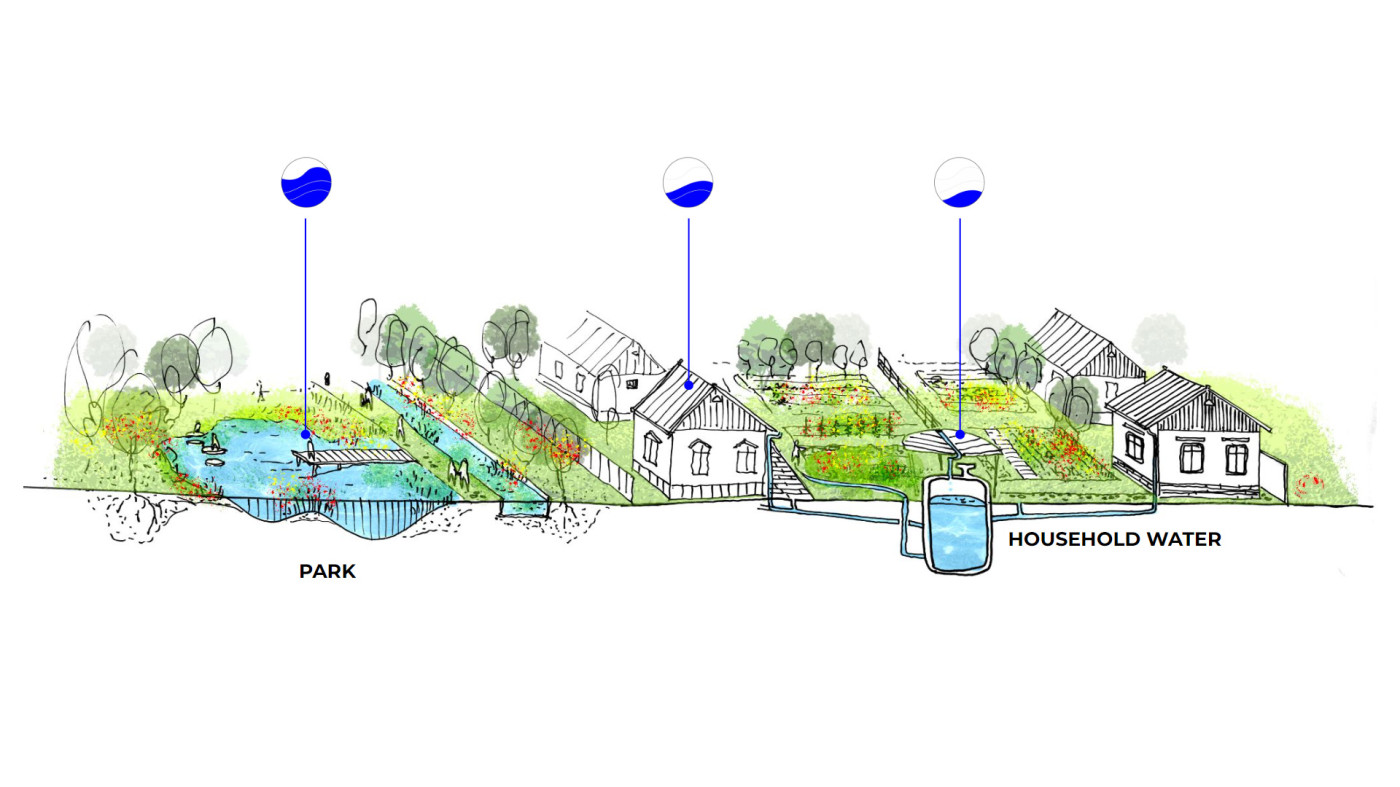
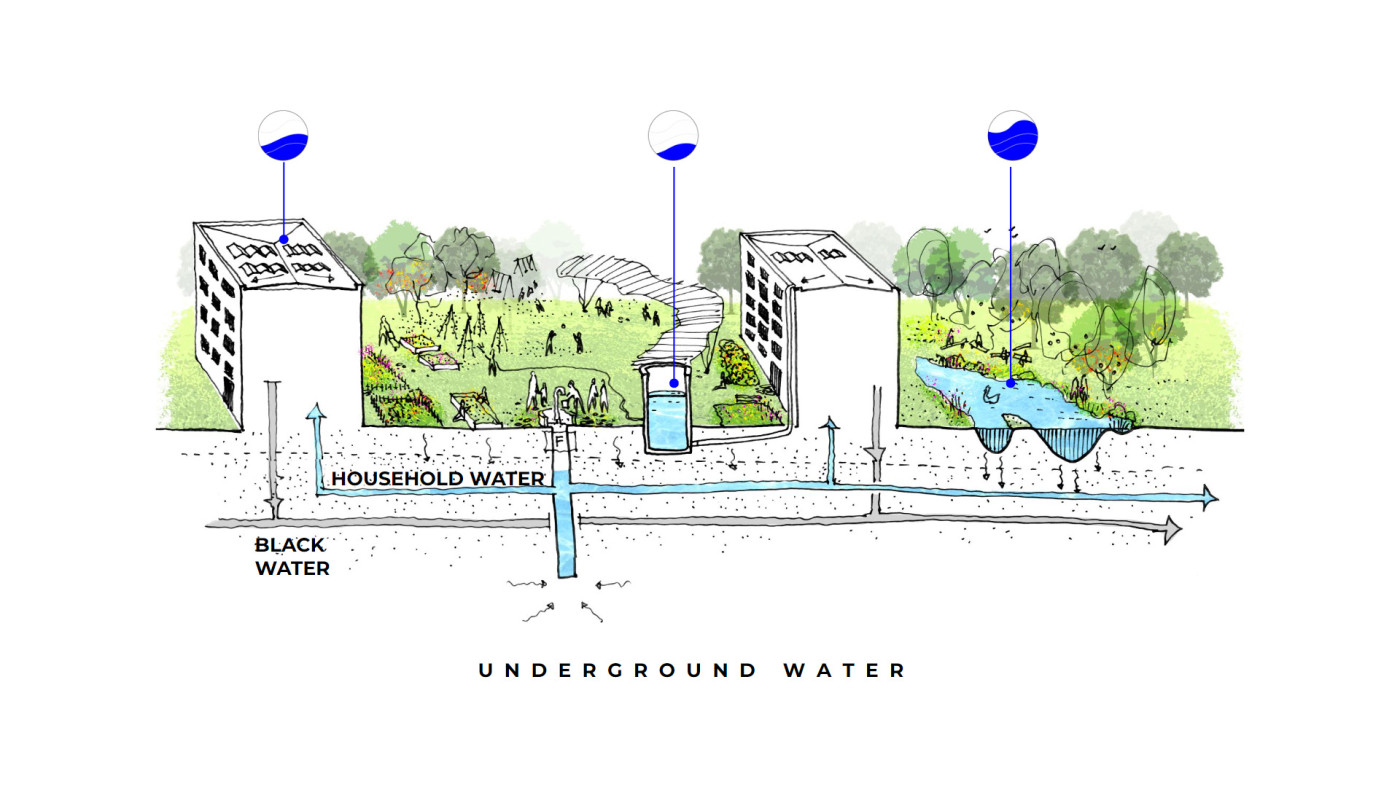
One of the key advantages of this approach is that nature restores itself. And while annual precipitation in the region is relatively low — averaging just 350 mm per year — it can still provide a portion of both technical and potable water needs.
This workshop was the first in a series, aimed at shaping a shared vision. Further steps will be developed by UNUN. For example, VNG International has already invited the teams to present the outcomes in training sessions for Ukrainian municipalities. At the same time, KOTSIUBA continues to integrate rainwater management into its own projects, ensuring these strategies are applied in practice.
